Emmanuel Episcopal
King George Co.
Port Conway, VA
Images
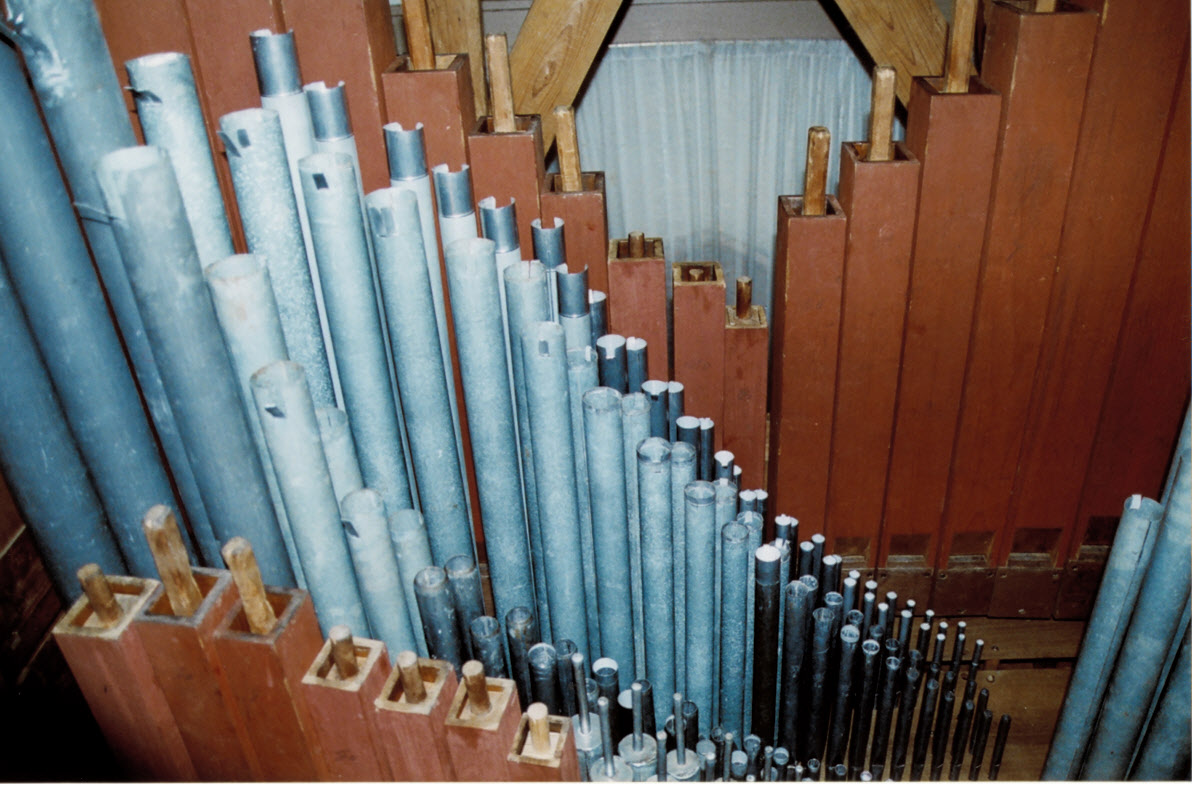 November, 2005 - Interior pipework post-restoration, front to back: St. Diap, Op. Diap, Pr., Dulciana (cut-down pipes extended back to 8'), St. Diap. basses (Photograph by Scot Huntington/Scot Huntington)
November, 2005 - Interior pipework post-restoration, front to back: St. Diap, Op. Diap, Pr., Dulciana (cut-down pipes extended back to 8'), St. Diap. basses (Photograph by Scot Huntington/Scot Huntington)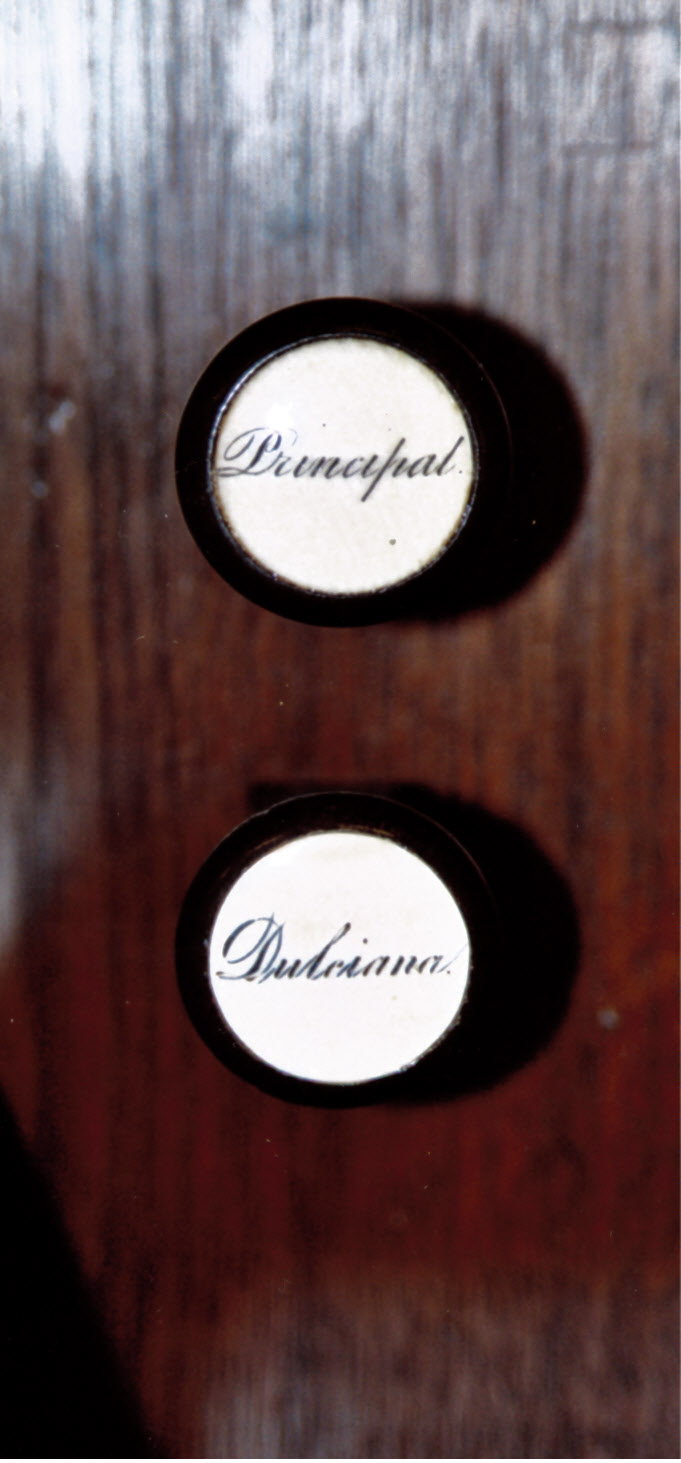 November, 2005 - Right jamb (Dulciana label new replacement) (Photograph by Scot Huntington/Scot Huntington)
November, 2005 - Right jamb (Dulciana label new replacement) (Photograph by Scot Huntington/Scot Huntington)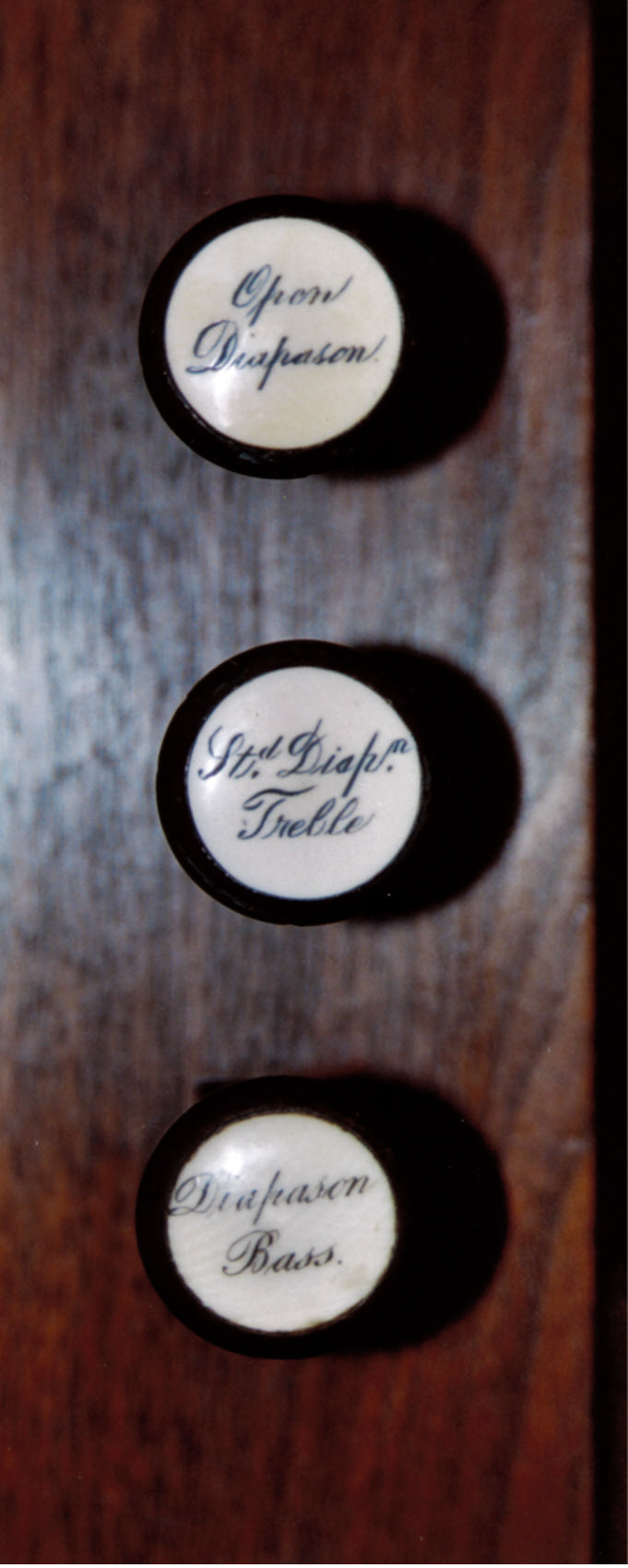 November, 2005 - Left jamb (St. Diap. label new replacement) (Photograph by Scot Huntington/Scot Huntington)
November, 2005 - Left jamb (St. Diap. label new replacement) (Photograph by Scot Huntington/Scot Huntington)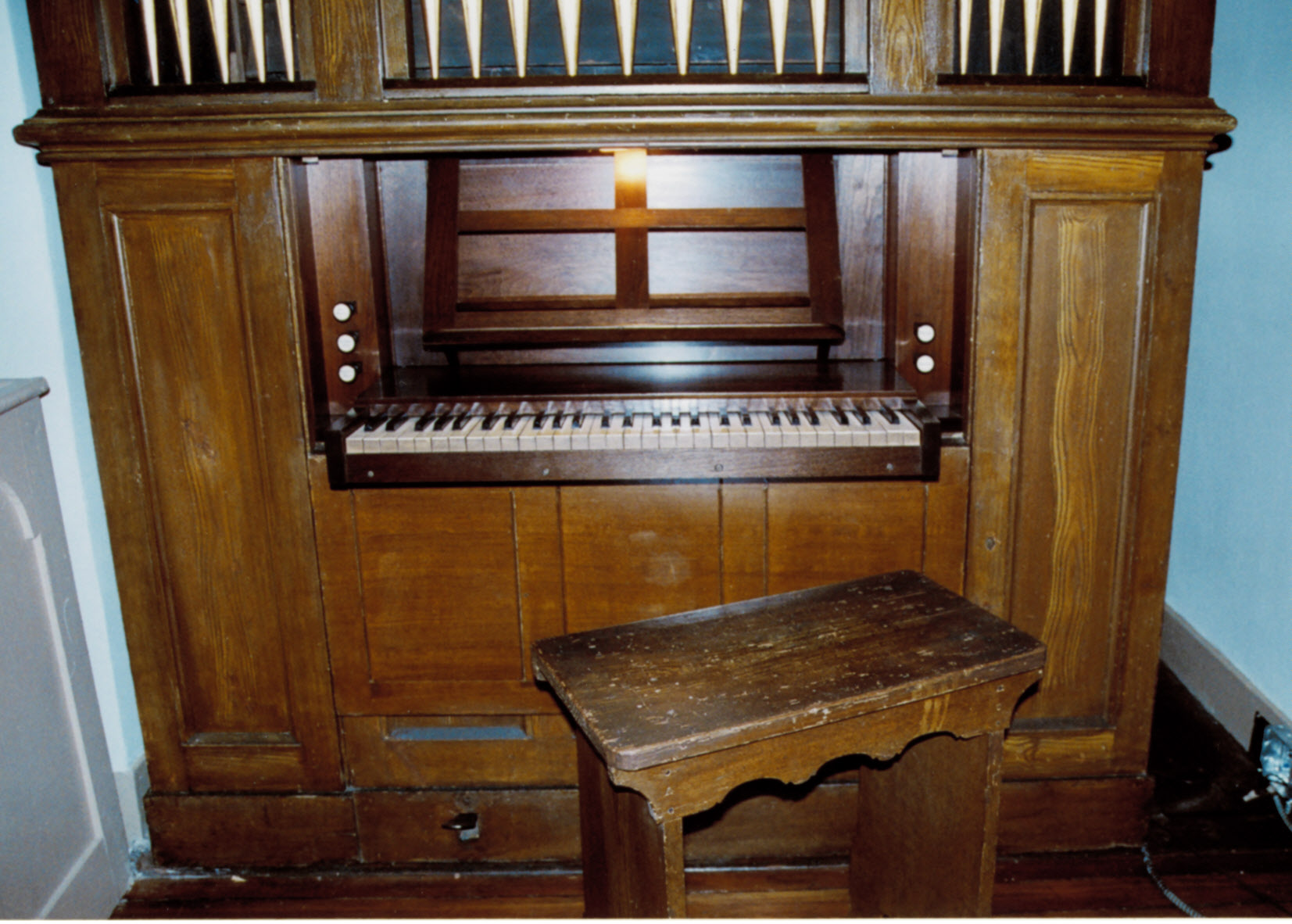 November, 2005 - Post-restoration keydesk (Photograph by Scot Huntington/Scot Huntington)
November, 2005 - Post-restoration keydesk (Photograph by Scot Huntington/Scot Huntington)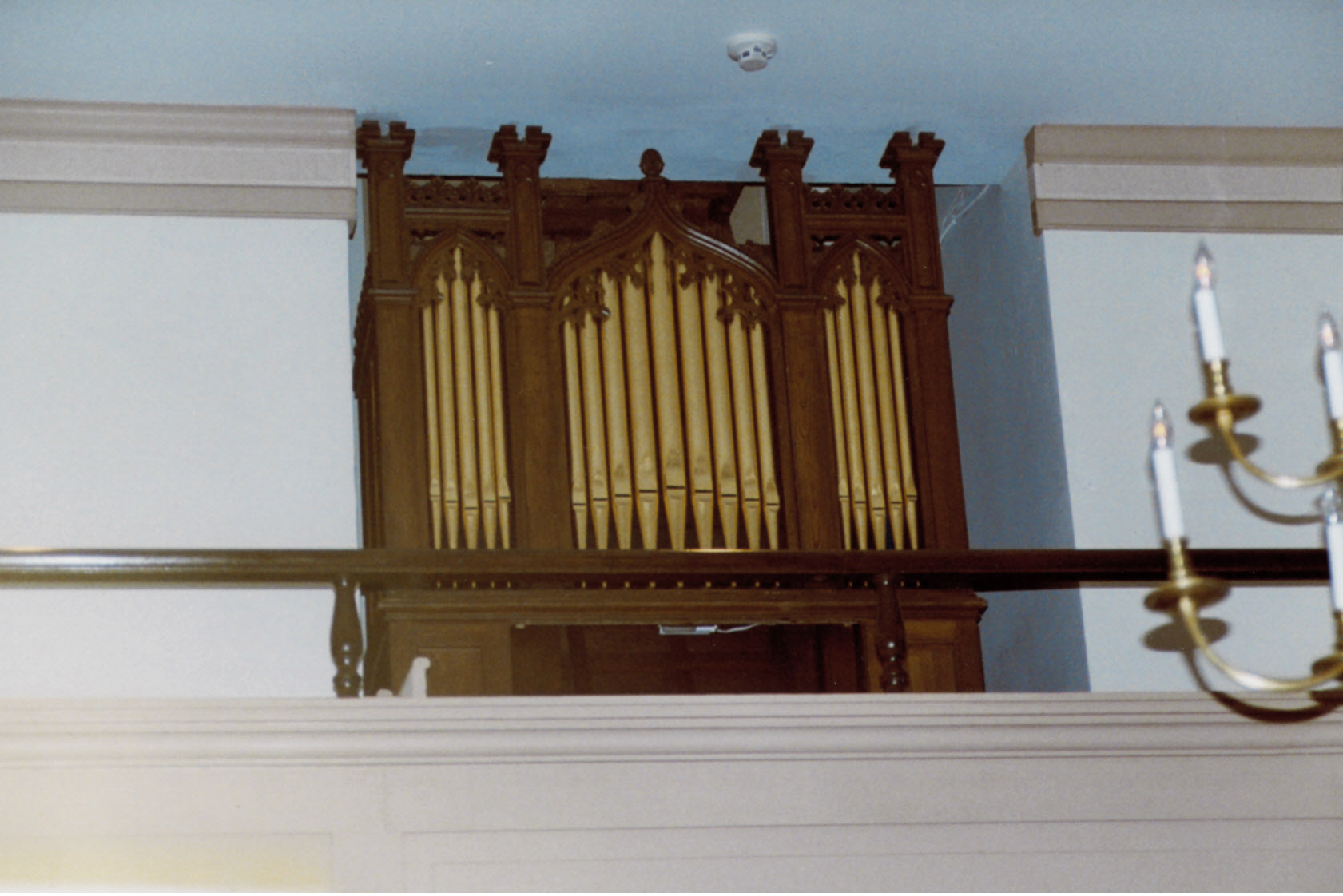 November, 2005 - Post-restoration image of organ in the rear gallery (Photograph by Scot Huntington/Scot Huntington)
November, 2005 - Post-restoration image of organ in the rear gallery (Photograph by Scot Huntington/Scot Huntington)
Consoles
Main
- Organ type: Traditional With Hinged Doors That Enclose Keyboards
- Console position: Keydesk Attached, Manuals Set Into Case
- 1 manuals
- 5 stops
- 5 registers
- 1 divisions
- Key action Type: Mechanical (Details Unknown)
- Stop action Type: Mechanical
- Stop layout Type: Drawknobs in Vertical Rows on Flat Jambs
- Manual compass: 56 notes
- Pedal Type: No Pedalboard
- Expression Type: Trigger/Hitch-Down Expression
- Combination action: None
Notes
2004-10-30 - Status Note: There 2000. -Database Manager
2004-10-30 - [An 1860 Erben is on the Erben list at Trinity Episcopal, Port Conway, VA.][Possibly zip 224__.] Old map appears to show this on the Rappahannock River opposite Port Royal. -Database Manager
2021-11-02 - The date 1978 was found inside the double-rise reservoir, confirming this as the year the organ underwent refurbishment repairs by an unknown itinerate organ hobbyist. The Dulciana had been cut down into a 2' Fifteenth with a typed label replacing the original, but whether this happened in 1978 or earlier is unclear. About two thirds of the original Dulciana pipes survived in this cut-down condition, luckily without alteration of the mouths and cut-ups. Spurious replacement pipes, mostly in the treble completed the rank. Once extended to original length, the pipework again spoke with its original voicing intact.
A new and noisy electric blower was added in 1978, and the hand-pumping system was removed, but the bottom plate of the single feeder was kept in the church tower, and placed back in service during the 2005 reconstruction of the original pumping system. The pipe tops were shortened to accommodate new and extremely crude 1978 tuning slides made from old coffee cans, and the pitch was lowered. These fit poorly and the pipework was crimped and badly mangled as a result. With the restoration of the original high pitch, the metal pipework was extended to restore the open metal pipes to cone tuning.
The original pine faux-grained finish was extant, with dings and blemishes in-painted in 2005. The original gilding on the half-round wooden dummy pipes had been covered over under at least one layer of gold radiator paint. Surface faults were repaired, and the facade was regilded in 24K gold leaf. A 2005 decoration mistake was rectified in November 2021-- a toner glaze was added in 2021 to change the gloss level from shiny to matte. Unknown at the time of the restoration, was historically, the reflectivity and shine of gilded show pipes needed to match the gloss level (or lack of it) of the casework which until late in the century was typically a matte finish. The gilded facade is now historically accurate (2021). A number of the plaster rosettes had cracked or were missing entirely. These were beautifully replicated in a synthetic resin by one of the talented furniture restoration specialists from Colonial Williamsburg, and faux painted to match by SLH & Co. A number of missing crenellations from the top cornice were also replicated and faux painted in 2005. Electrical boxes and other unsightly attachments to the casework were removed.
The windchest was in good condition, its mahogany table still intact, and rather than being replaced with plywood in 2005, small cracks were plugged with mahogany shims and the channels poured out with hide glue. The pallets were recovered in leather, and the glued-in method of pallet tail capture was retained.
Two original stop labels had survived, and the three missing labels were carefully replicated in 2005. Low-C of the 4' Principal was signed by two Erben employees, Polster a NY pipemaker, and Teale known to work in the Baltimore works. Church history confirms the organ was purchased from the Baltimore branch of the Erben works.
This was the first instrument SL Huntington & Co. restored after Scot Huntington made a career-changing pilgrimage to be tutored in museum conservation techniques by John Watson, chief musical instrument conservator in the Colonial Williamsburg Conservation Lab. -Scot Huntington
Stoplist
Source: Taken from the console 2005
Port Conway, Virginia
Emmanuel Church, Episcopal
HENRY ERBEN (1860)
S.L. Huntington & Co., 2005 - Restoration
MANUAL
Open Diapason. 39 [t.f., zinc 18-24, then common metal; new label]
Stᵈ. Diapⁿ. Treble 39 [t.f. wood, common metal chimney flute from c25,
soldered caps and ear-tuned; new label]
Dulciana. 39 [t.f., all extant original pipes extended back to
8' pitch, new replica pipes to replace
missing or spurious pipes; common metal, new
label]
Diapason Bass. 17 [1-17 stopped pine; "2nd scale"; original label]
Principal. 56 [zinc to e17, E5 spurious bell gamba; marked 12th
from G8. C1 signed "Z. Teale" and "A. Polster
1860"; common metal, original label]
ACTION: Mech. Key & Stop VOICES: 4 STOPS: 5 RANKS: 4 PIPES: 190
NOTES
Compass: C1-g56
Pitch: A446 @ 72 degrees, equal temperament. Original pitch restored 2005
Pressure: 68 mm
Hand-pumping system replicated 2005, incorporating the surviving extant
parts.
Other Links
Regrettably, it is not possible to display the information about the sponsor of this pipeorgandatabase entry or if there is a sponsor. Please see About Sponsors on Pipe Organ Database.




